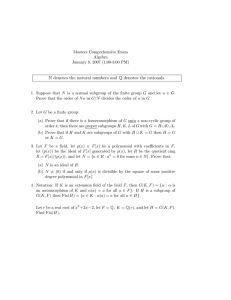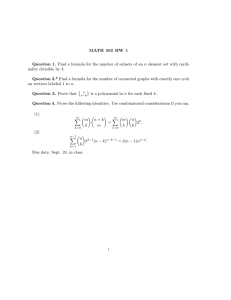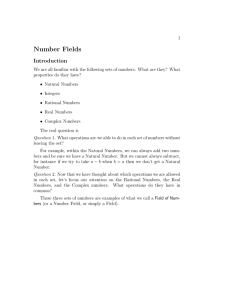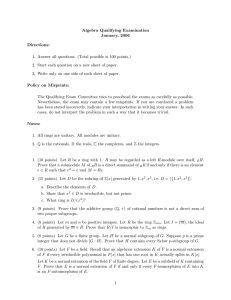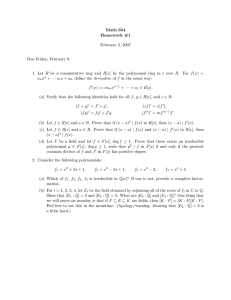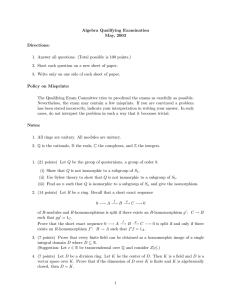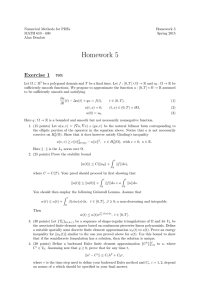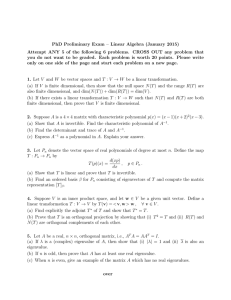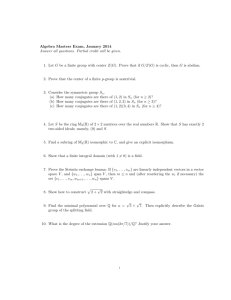University of Utah, Department of Mathematics Fall 2012, Algebra Qualifying Exam
advertisement
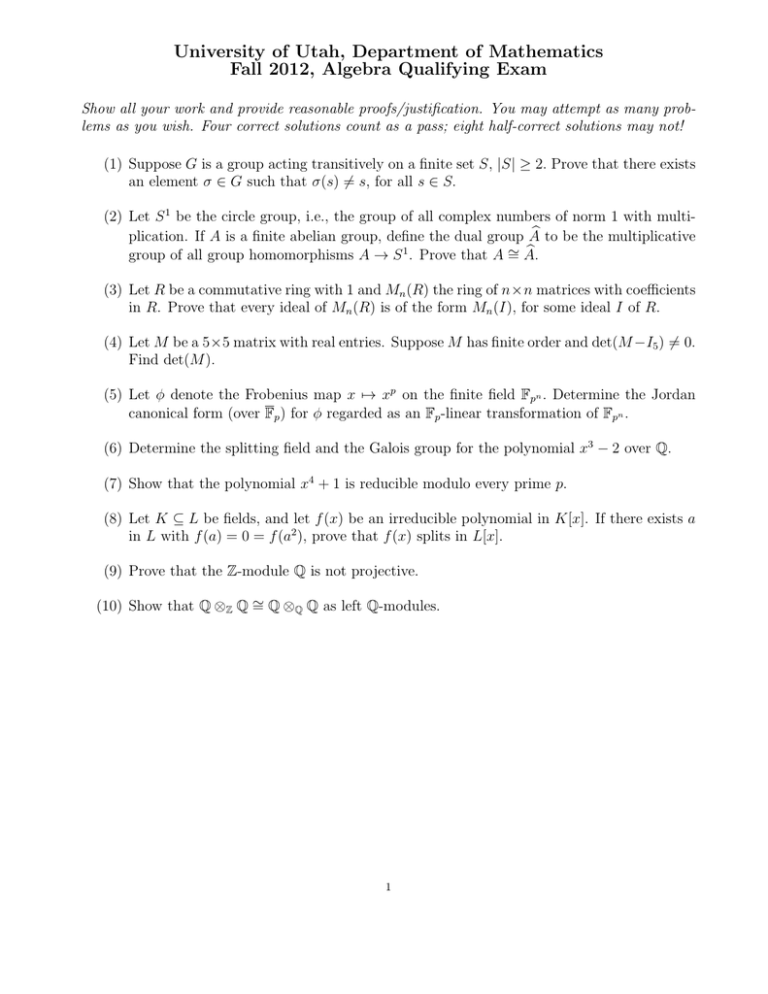
University of Utah, Department of Mathematics Fall 2012, Algebra Qualifying Exam Show all your work and provide reasonable proofs/justification. You may attempt as many problems as you wish. Four correct solutions count as a pass; eight half-correct solutions may not! (1) Suppose G is a group acting transitively on a finite set S, |S| ≥ 2. Prove that there exists an element σ ∈ G such that σ(s) 6= s, for all s ∈ S. (2) Let S 1 be the circle group, i.e., the group of all complex numbers of norm 1 with multib to be the multiplicative plication. If A is a finite abelian group, define the dual group A 1 ∼ b group of all group homomorphisms A → S . Prove that A = A. (3) Let R be a commutative ring with 1 and Mn (R) the ring of n×n matrices with coefficients in R. Prove that every ideal of Mn (R) is of the form Mn (I), for some ideal I of R. (4) Let M be a 5×5 matrix with real entries. Suppose M has finite order and det(M −I5 ) 6= 0. Find det(M ). (5) Let φ denote the Frobenius map x 7→ xp on the finite field Fpn . Determine the Jordan canonical form (over Fp ) for φ regarded as an Fp -linear transformation of Fpn . (6) Determine the splitting field and the Galois group for the polynomial x3 − 2 over Q. (7) Show that the polynomial x4 + 1 is reducible modulo every prime p. (8) Let K ⊆ L be fields, and let f (x) be an irreducible polynomial in K[x]. If there exists a in L with f (a) = 0 = f (a2 ), prove that f (x) splits in L[x]. (9) Prove that the Z-module Q is not projective. (10) Show that Q ⊗Z Q ∼ = Q ⊗Q Q as left Q-modules. 1

